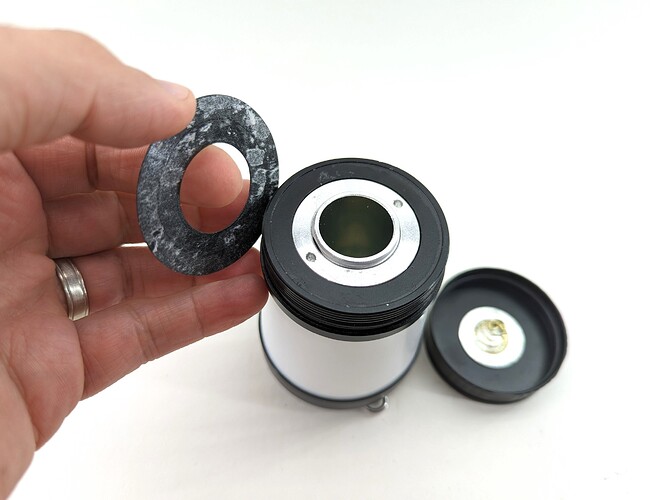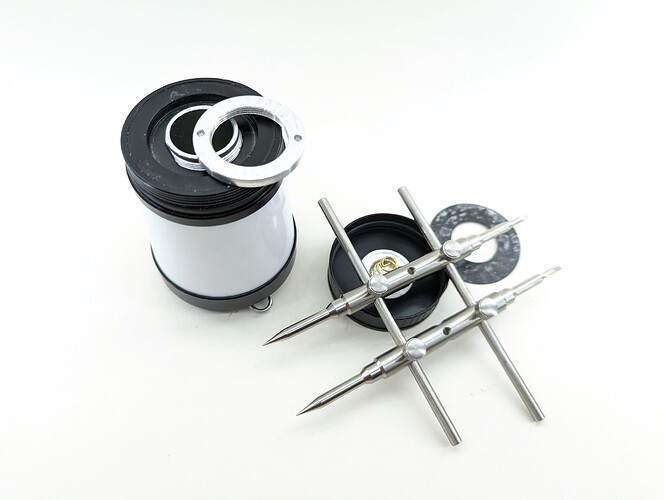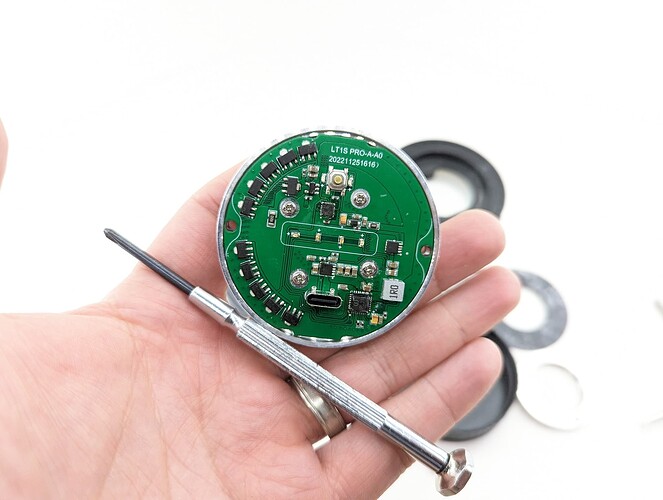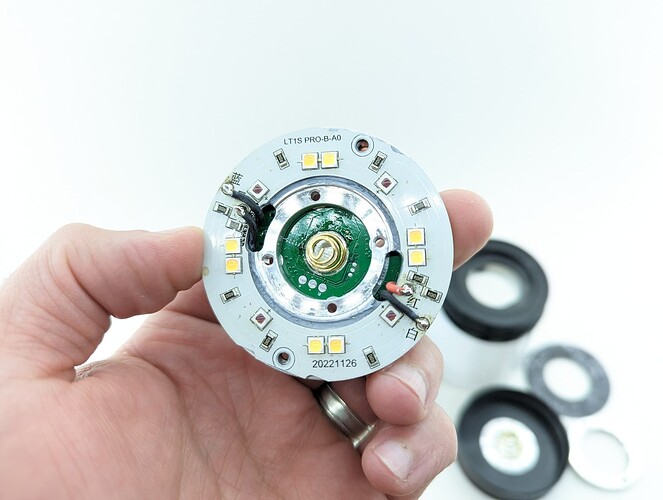Is it true that only this first batch was going to have the 519A and later editions will have the LH351D ? See post #247
That’s good to hear. So at least that issue is solved as long as you’re good at aiming in deep holes.
Taping it (and the USB cable) to a long toothpick (or popsicle stick) should do help for aiming it at the pads. It’s not a borehole through a mountain, only around 8cm deep; you can support the stick against the top rim, so it shouldn’t need a super steady hand.
Hopefully the software it ships with is usable though, while waiting for ToyKeeper to release the fully featured version.
Thanks for the detailed info. Based on that, and with no disrespect to @gchart, I’ll be waiting for a later release with mainline Anduril installed, coupon or no coupon.
Damn, I can’t decide what to do here… Wait for a possibly improved firmware version or get the current version that definitely comes with 519A… If there was no question about future versions being 519A then I’d wait but … lets see what happens after I have a few more Friday night beers lol
on the Pro version, is there any feature that helps you find it in the dark?
Lit switch?
Easier to make a fork flasher than swap that many emitters in a lantern.
What’s the best 21700 for this thing? I’m using the P45B in my flashlights, but probably for a lantern the extra capacity would be nice.
Probably the LG M50LT or the Samsung 50S. But of those two, probably the M50LT since it runs cooler than the 50S.
EDIT: Or maybe the 50S is better since it tolerates the temperatures better than the M50LT? Unsure, but I saw one of the devs of the original BLF LT1 isn’t fond of the LT1S since the battery tube is surrounded by emitters and therefore experiences higher heat than normal, hence my thoughts on temperature tolerance. Probably doesn’t matter between the two in a real world comparison.
Hmm. Maybe then I should stick with the lower capacity Molicel which has great thermal performance.
I doubt it runs at a high current considering it is a lantern. A Samsung 50E might be the best “easy to find” option, with the highest possible capacity being a LG M58T. Sofirn seems to have used this cell before when bundled with some lights (Tacgriz tested the included battery in his LT1 mini to 5700mAh), it has the highest capacity of all available 21700s and a CDR of 12.5A, should be plenty for a approximately 600lm lantern. The Vapcell F58 is likely to be a rewrap of this battery.
It doesn’t like heat as much, so it’s probably not best to run it at turbo for long, considering the battery is in between all the emitters.
The 50S has terrible cycle life compared to the alternatives, I would only recommend it for something that requires the high max current it provides.
That spec you’re quoting is life cycle when discharged at 20A I believe. Most life cycle tests discharge at much much lower currents. The 50S data sheet does not include any info about charge cycles when discharged at a low current.
Yup that was my plan! Also it will reduce voltage sag, so the battery indicator will be more accurate (if it’s anything like the one on the regular LT1S where voltage sag makes the battery indicator misleading).
yes, either a lit switch or any other led that can stay on, like one of the battery indicator leds.
Teardown!
Good news: it looks like with about 2 minutes and a couple of tools, getting right down to the flashing pads is quite easy. No soldering required. No forking around either. ![]() You’ll need a Philips screwdriver and something like a camera spanner wrench, needlenose pliers, or even a couple of nails run through a small board. With it taken apart, the existing adapter (mine or thefreeman) is easy to use, should you desire to flash updates.
You’ll need a Philips screwdriver and something like a camera spanner wrench, needlenose pliers, or even a couple of nails run through a small board. With it taken apart, the existing adapter (mine or thefreeman) is easy to use, should you desire to flash updates.
Lift up the black sticker that covers the retaining ring
Remove the retaining ring and pull off the diffuser
Remove the 2 screws that hold the driver assembly to the top cap
Flip the driver over and remove the 4 screws that are holding the battery tube on
Now you’ve got easy access to those flashing pads!
Another shot of that LED board + pads
All of the parts of the Sofirn LT1S Pro
Could you show us the top button? Is it like the LT1s or does it have a programmable led button like the LT1?
it is black/smoked, just like the Sofirn store listing shows. But there IS an aux LED under the button that is controlled through the normal Anduril2 functions. Red? Orange? I dunno… I’m colorblind. Since the button is dark, it’s kinda hard to see in a lit room unless you have the aux on high, in which case the standby drain is quite high at 1.5 mA. In a dark room, the low aux is just visible, with a standby drain of 290 uA.
Oh ok, I figured they just recycled the pic from the LT1s.
Ooph that high aux drain again. I wish they would fix that, but that is not as high as some of the other ones.
The absolute maximum current it can use is about 5.3A, I think… roughly 1.75A per channel, with 3 channels. Almost any 21700 cell should be able to handle that.
In practice though, the limit is about 3.5A, because power is divided between the two white channels, so it’s 1.75A white + ~1.8A red… and that’s only in the “white + red” mode at full power.
But most of the time during actual use, it’ll probably be using 1A or less, because it doesn’t need to be running at full power in order to be useful.
On the other end of the spectrum, the lowest levels are pretty low. I got dynamic PWM working today, which improved 4 things:
- Lower lows
- Smoother ramp
- Better color blending in low modes
- The red channel behaves much better now… apparently it doesn’t like fast PWM, so slowing down the pulses at low levels makes it work better. The weird behavior I saw before is almost entirely gone.
There is a downside though. The PWM will be visible to some people on low modes.
Anyway, here are some measurements of its lowest modes: (on my prototype)
- Battery indicator LEDs (3/4 lit): +6.36 mA
- Standby (aux low): 0.16 mA (3.5 years)
- Standby (aux high): 6.9 mA (30 days)
- Moon (red): 2.17 mA (96 days)
- Moon (white): 1.47 mA (141 days)
The battery indicator LEDs turn on every time the button is pressed, and they stay on for ~33 seconds. They’re bright enough and focused enough to aim at something and use as a moon mode. They’re quite a bit brighter than the actual moon mode.
For comparison, without dynamic PWM, gchart measured the lowest red mode at 55 mA (3.8 days). Getting it down to 2 mA (96 days) is a pretty big improvement.






